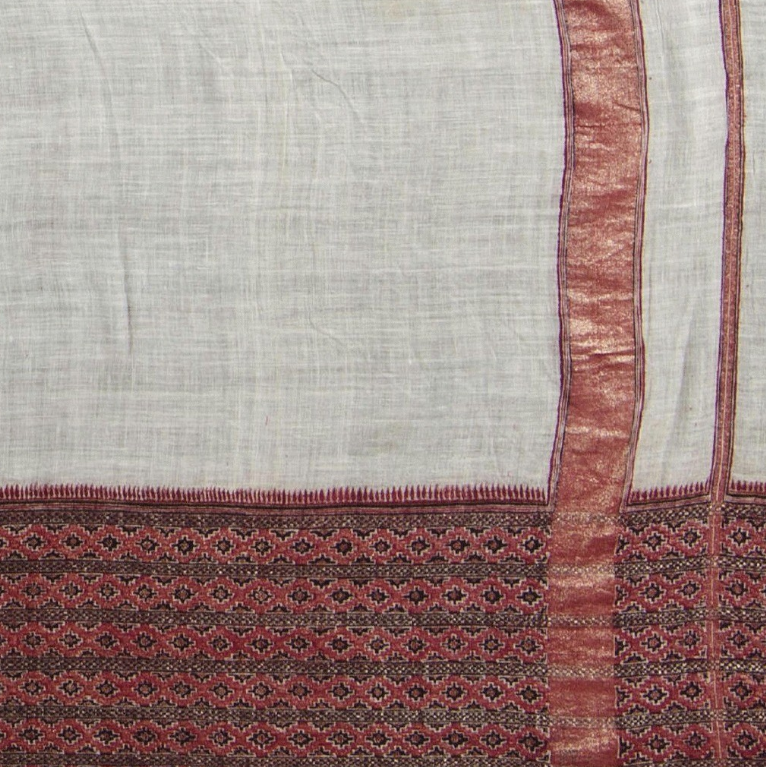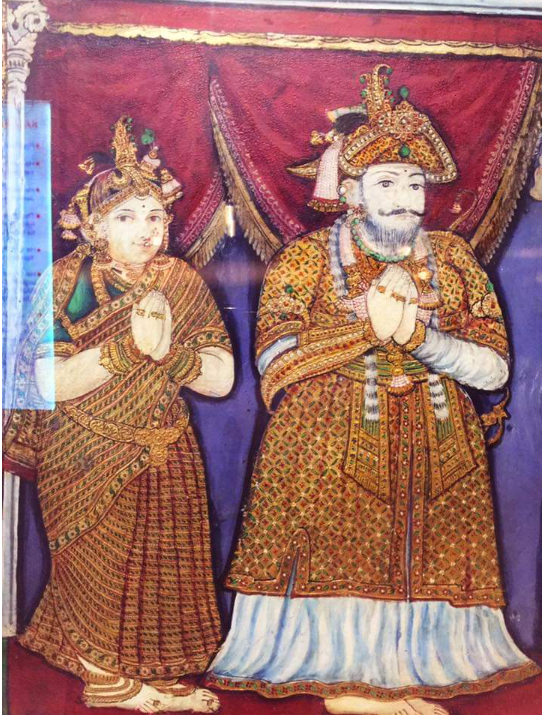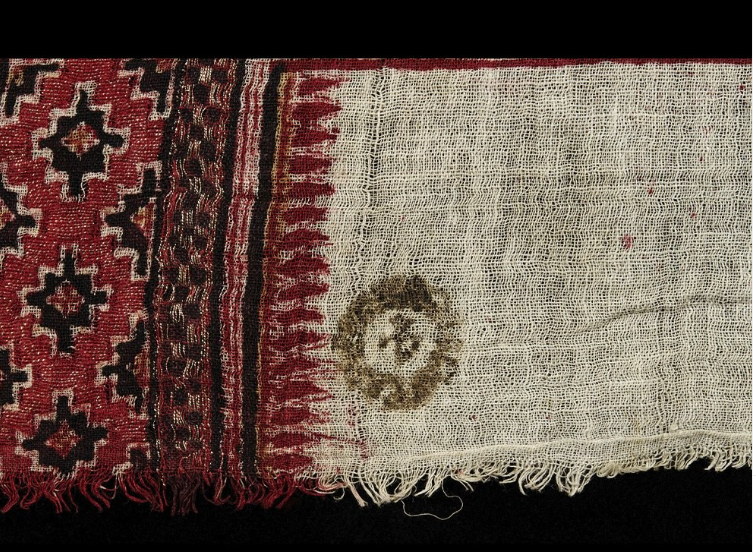Kodali Karuppur Village, nestled by River Kollidam, once thrived with a centuries-old textile industry, renowned for crafting Kodali Karuppur sarees. Today, the textile infrastructure is gone, but the village remains picturesque, sustained by agriculture. Its ancient temples and the flowing river still attract visitors, preserving the essence of its rich heritage.

The tale of the Kodali Karuppur sari is one of scarce records and few remnants preserved for the future, representing a craft in decline. Efforts to revive this fading art were made in the past, such as during the ‘Festival of India’ in Britain in the early 1980s and later by WSC Chennai, commissioned by the Government. Despite these endeavors, only a handful of samples remain today, showcasing the struggle to keep this traditional craft alive.
The Past of Kodali Karuppur Saris

The Kodali Karuppur saris emerged during the reign of Maratha ruler Serfoji Raja Bhonsle Chhatrapati II (1787-1832), exclusively crafted for the Ranis of Thanjavur until the 19th century. Woven in the village of Kodali Karuppur near Kumbakonam, within Thanjavur district, the weavers’ ancestors were around 400-500 families who had migrated from Saurashtra to Madurai, Salem, and Kancheepuram. The Karuppur cloth held a prestigious status, adorning only the Thanjavur nobility, who bestowed it as a mark of honor known as “khillat.” In Maratha states like Baroda, Kohlapur, and Satara, the Karuppur sari became an integral part of a bride’s trousseau, while the Karuppur turban adorned the groom. This textile tradition intertwined with religion, finding use in sacred temple rituals. Sadly, with the waning of royal patronage around the 19th century, the craft gradually faded away. Today, the Karuppur cloth remains a rare and expensive treasure, owing to the laborious and highly skilled craftsmanship involved.
Weaving of the Kodali Karuppur Saris

The captivating beauty of the Karuppur sari lies in its intricate ornamentation on a cotton base, adorned with exquisite gold brocade. Natural dyes, applied using kalam or engraved wooden blocks, further enhanced its allure. Creating this masterpiece required a meticulous plan, with weavers, printers, dyers, and painters working in harmony. Employing the jamdani technique, gold motifs were skillfully woven into the borders and body on the loom, following the designated design. The interstices absorbed the colors of the fabric’s dyes, resulting in a mesmerizing blend. After weaving, the fabric underwent a process involving bleaching with cow dung paste, infusion in kadukkai, thorough washing, and drying. Intricate wax outlines adorned the pallu and fields, while mordants brought red and black hues to life. A dye bath produced a rich maroon, while the second dyeing imbued the uncovered portions with their designated color. The combination of alum paste and a mixture of iron filings, saltwater, and palm jaggery yielded the enchanting maroon shade. Ajrakh printing was also used to print both the sides of the fabric.
With time, Jacquard weaving was utilised instead of Jamdani weaving to reduce the costs. The fabrics were printed by wooden blocks as mentioned above showcasing the idiosyncrasies in the print.
The design repertoire of the Karuppur sari features a delightful array of mostly geometric and linear patterns, intertwined vine-like motifs, stars, veldarri patterns, and the charming thazhambu (screw pine flower) design. The main sari body of Karuppur saris showcases an array of commonly used motifs, including the beloved Mango (manga), Coconut (kalasam), Temple (gopuram), Beads (rudraksh), delicate Creeper (kodi visiri), and the elegant Lotus (kamal). Among these, the timeless Mango motif holds a special place, cherished by craftsmen throughout India. South Indian sari designs feature stockier and stylized mangoes, while the Kashmiri version and paisley display longer curves, preserving their distinctive shape.
Revival Attempts of the Kodali Karuppur Sari

Some attempts have been made by revivalists and institutions such as Weavers’ Service Centre a Tamil Nadu in 1981 (A sari that was made was exhibited at the Vishwakarma exhibition in London, a specimen of the same is showcased at the Museum of Government College of Art and Crafts, Chennai).Kalakshetra Foundation also did it’s bid in reviving the craft tradition utilising craft experts and dyers and weavers in making a Kodali Karuppur Sari. Sundari Silks, a sari brand also now is actively trying to revive this beautiful weaving tradition within its sari collection, one which could be made on order. Many such initiatives have been taken by designers and fashion entrepreneurship to revive this beautiful tradition. However, the true essence of the weaving tradition that once clothed the royalty is now only found in museum collections.

Contributor





